Preface to the Sixth Edition
Preface to the Fifth Edition
Preface to the Fourth Edition
Preface to the Third Edition
Preface to the Second Edition
Preface to the First Edition
Table of Contents
1 Introduction
1.1 Enumeration
1.2 Running Time of Algorithms
1.3 Linear Optimization Problems
1.4 Sorting
Exercises
References
2 Graphs
2.1 Basic Definitions
2.2 Trees, Circuits, and Cuts
2.3 Connectivity
2.4 Eulerian and Bipartite Graphs
2.5 Planarity
2.6 Planar Duality
Exercises
References
3 Linear Programming
3.1 Polyhedra
3.2 The Simplex Algorithm
3.3 Implementation of the Simplex Algorithm
3.4 Duality
3.5 Convex Hulls and Polytopes
Exercises
References
4 Linear Programming Algorithms
4.1 Size of Vertices and Faces
4.2 Continued Fractions
4.3 Gaussian Elimination
4.4 The Ellipsoid Method
4.5 Khachiyan's Theorem
4.6 Separation and Optimization
Exercises
References
5 Integer Programming
5.1 The Integer Hull of a Polyhedron
5.2 Unimodular Transformations
5.3 Total Dual Integrality
5.4 Totally Unimodular Matrices
5.5 Cutting Planes
5.6 Lagrangean Relaxation
Exercises
References
6 Spanning Trees and Arborescences
6.1 Minimum Spanning Trees
6.2 Minimum Weight Arborescences
6.3 Polyhedral Descriptions
6.4 Packing Spanning Trees and Arborescences
Exercises
References
7 Shortest Paths
7.1 Shortest Paths From One Source
7.2 Shortest Paths Between All Pairs of Vertices
7.3 Minimum Mean Cycles
7.4 Shallow-Light Trees
Exercises
References
8 Network Flows
8.1 Max-Flow-Min-Cut Theorem
8.2 Menger's Theorem
8.3 The Edmonds-Karp Algorithm
8.4 Dinic's, Karzanov's, and Fujishige's Algorithm
8.5 The Goldberg-Tarjan Algorithm
8.6 Gomory-Hu Trees
8.7 The Minimum Capacity of a Cut in an Undirected Graph
Exercises
References
9 Minimum Cost Flows
9.1 Problem Formulation
9.2 An Optimality Criterion
9.3 Minimum Mean Cycle-Cancelling Algorithm
9.4 Successive Shortest Path Algorithm
9.5 Orlin's Algorithm
9.6 The Network Simplex Algorithm
9.7 Flows Over Time
Exercises
References
10 Maximum Matchings
10.1 Bipartite Matching
10.2 The Tutte Matrix
10.3 Tutte's Theorem
10.4 Ear-Decompositions of Factor-Critical Graphs
10.5 Edmonds' Matching Algorithm
Exercises
References
11 Weighted Matching
11.1 The Assignment Problem
11.2 Outline of the Weighted Matching Algorithm
11.3 Implementation of the Weighted Matching Algorithm
11.4 Postoptimality
11.5 The Matching Polytope
Exercises
References
12 b-Matchings and T-Joins
12.1 b-Matchings
12.2 Minimum Weight T-Joins
12.3 T-Joins and T-Cuts
12.4 The Padberg-Rao Theorem
Exercises
References
13 Matroids
13.1 Independence Systems and Matroids
13.2 Other Matroid Axioms
13.3 Duality
13.4 The Greedy Algorithm
13.5 Matroid Intersection
13.6 Matroid Partitioning
13.7 Weighted Matroid Intersection
Exercises
References
14 Generalizations of Matroids
14.1 Greedoids
14.2 Polymatroids
14.3 Minimizing Submodular Functions
14.4 Schrijver's Algorithm
14.5 Symmetric Submodular Functions
14.6 Submodular Function Maximization
Exercises
References
15 NP-Completeness
15.1 Turing Machines
15.2 Church's Thesis
15.3 P and NP
15.4 Cook's Theorem
15.5 Some Basic NP-Complete Problems
15.6 The Class coNP
15.7 NP-Hard Problems
Exercises
References
16 Approximation Algorithms
16.1 Set Covering
16.2 The Max-Cut Problem
16.3 Colouring
16.4 Approximation Schemes
16.5 Maximum Satisfiability
16.6 The PCP Theorem
16.7 L-Reductions
Exercises
References
17 The Knapsack Problem
17.1 Fractional Knapsack and Weighted Median Problem
17.2 A Pseudopolynomial Algorithm
17.3 A Fully Polynomial Approximation Scheme
17.4 Multi-Dimensional Knapsack
17.5 The Nemhauser-Ullmann Algorithm
Exercises
References
18 Bin-Packing
18.1 Greedy Heuristics
18.2 An Asymptotic Approximation Scheme
18.3 The Karmarkar-Karp Algorithm
Exercises
References
19 Multicommodity Flows and Edge-Disjoint Paths
19.1 Multicommodity Flows
19.2 Algorithms for Multicommodity Flows
19.3 Sparsest Cut and Max-Flow Min-Cut Ratio
19.4 The Leighton-Rao Theorem
19.5 Directed Edge-Disjoint Paths Problem
19.6 Undirected Edge-Disjoint Paths Problem
Exercises
References
20 Network Design Problems
20.1 Steiner Trees
20.2 The Robins-Zelikovsky Algorithm
20.3 Rounding the Directed Component LP
20.4 Survivable Network Design
20.5 A Primal-Dual Approximation Algorithm
20.6 Jain's Algorithm
20.7 The VPN Problem
Exercises
References
21 The Traveling Salesman Problem
21.1 Approximation Algorithms for the TSP
21.2 Euclidean TSP
21.3 Local Search
21.4 The Traveling Salesman Polytope
21.5 Lower Bounds
21.6 Branch-and-Bound
Exercises
References
22 Facility Location
22.1 The Uncapacitated Facility Location Problem
22.2 Rounding Linear Programming Solutions
22.3 Primal-Dual Algorithms
22.4 Scaling and Greedy Augmentation
22.5 Bounding the Number of Facilities
22.6 Local Search
22.7 Capacitated Facility Location Problems
22.8 Universal Facility Location
Exercises
References
Notation Index
Author Index
Subject Index

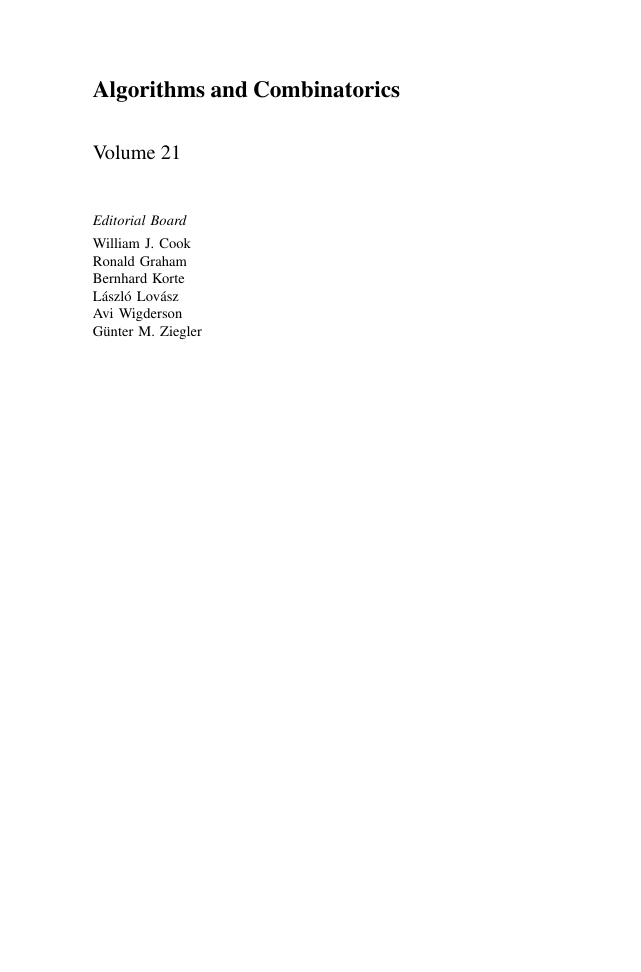

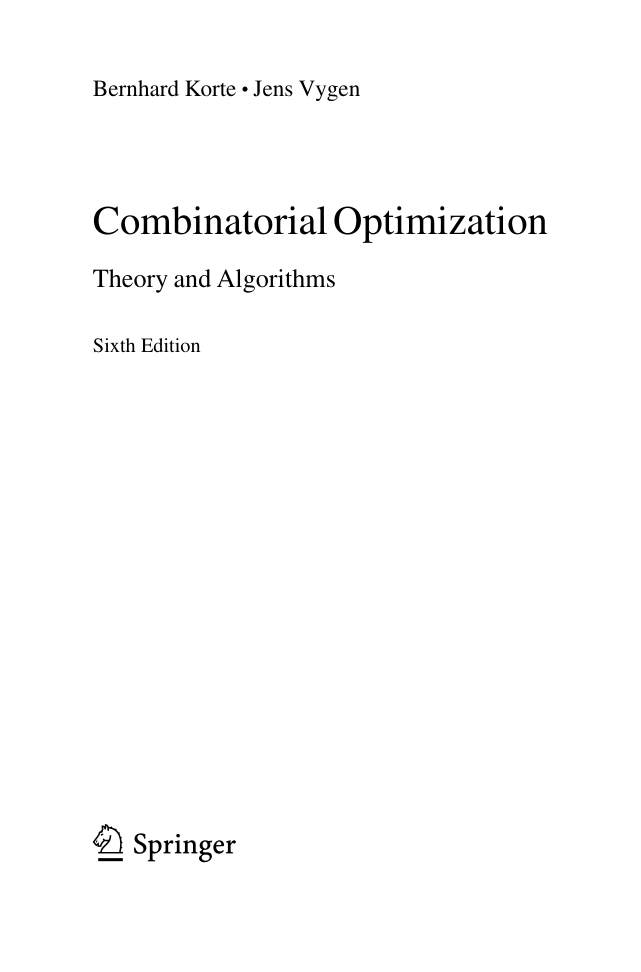
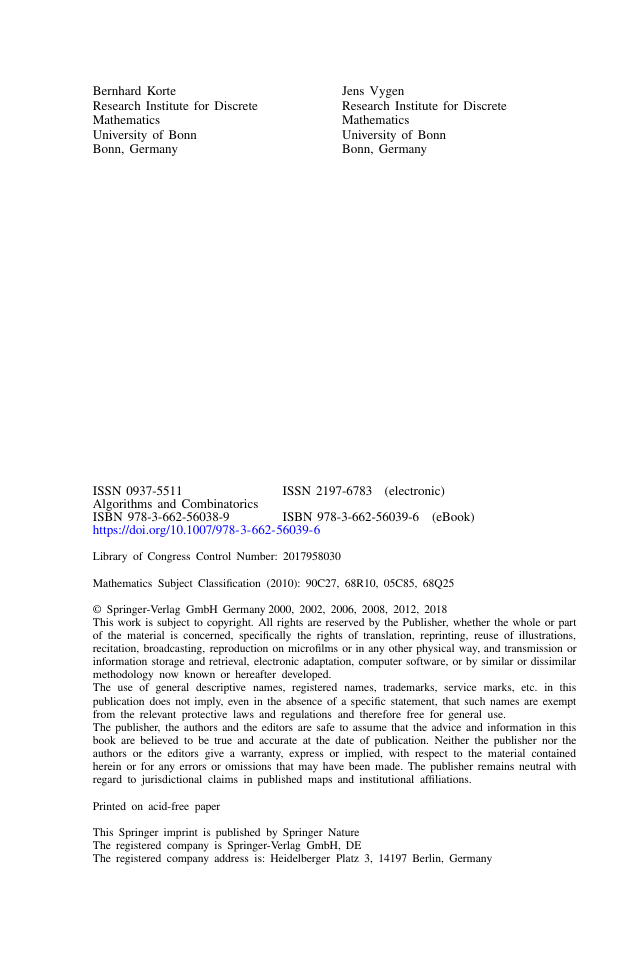
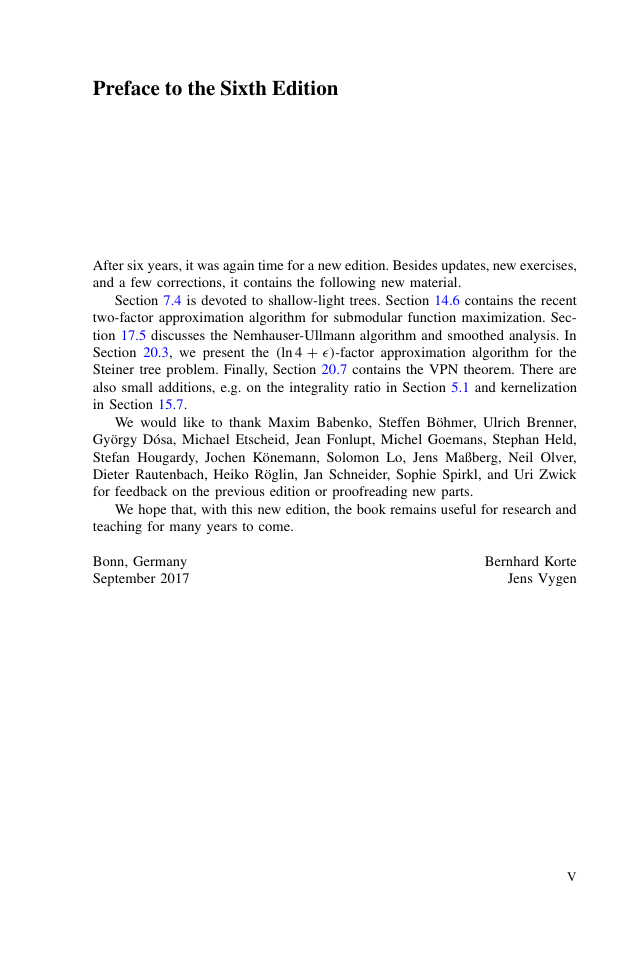
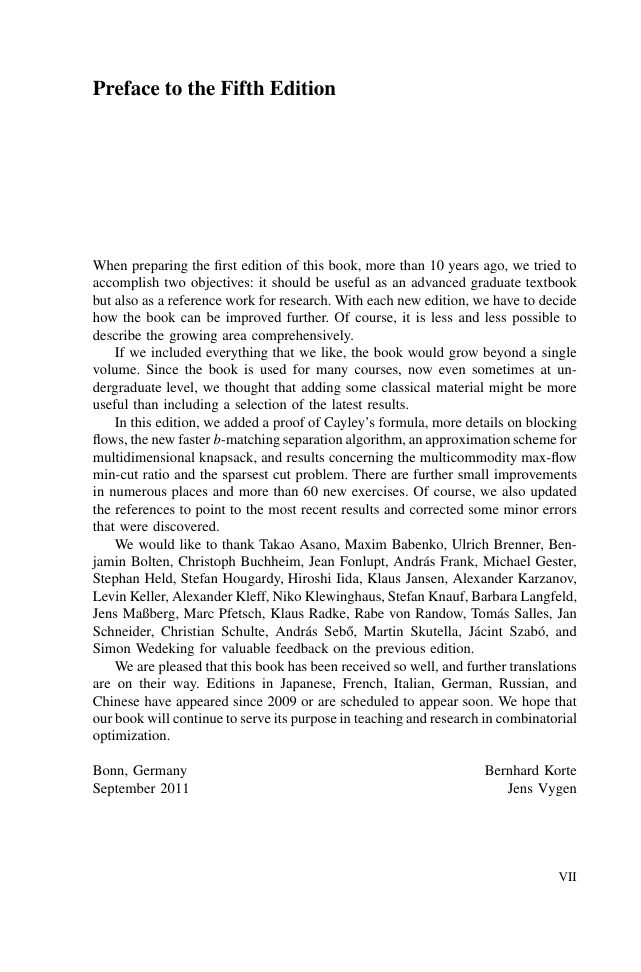
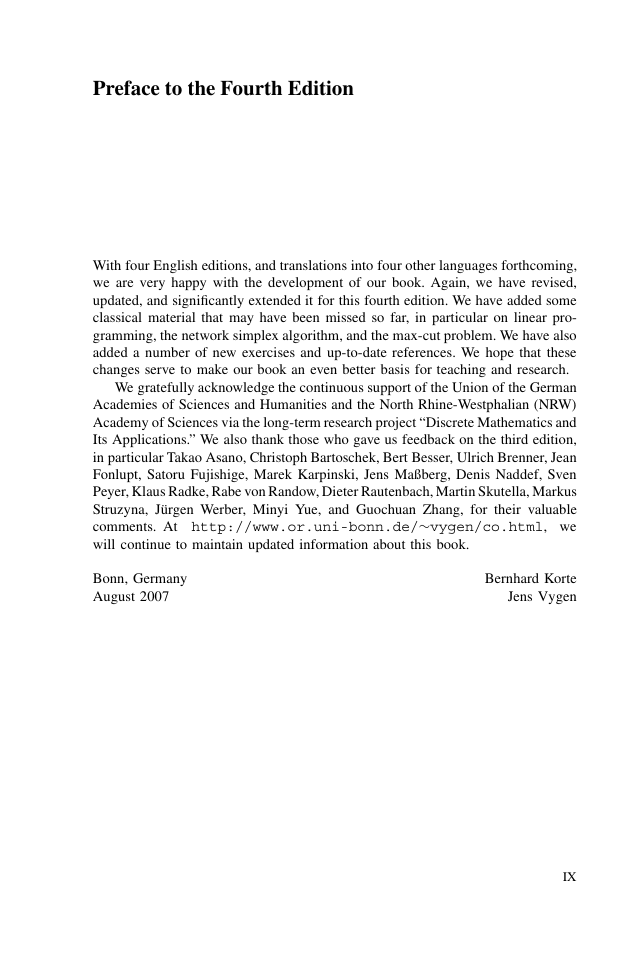








 2023年江西萍乡中考道德与法治真题及答案.doc
2023年江西萍乡中考道德与法治真题及答案.doc 2012年重庆南川中考生物真题及答案.doc
2012年重庆南川中考生物真题及答案.doc 2013年江西师范大学地理学综合及文艺理论基础考研真题.doc
2013年江西师范大学地理学综合及文艺理论基础考研真题.doc 2020年四川甘孜小升初语文真题及答案I卷.doc
2020年四川甘孜小升初语文真题及答案I卷.doc 2020年注册岩土工程师专业基础考试真题及答案.doc
2020年注册岩土工程师专业基础考试真题及答案.doc 2023-2024学年福建省厦门市九年级上学期数学月考试题及答案.doc
2023-2024学年福建省厦门市九年级上学期数学月考试题及答案.doc 2021-2022学年辽宁省沈阳市大东区九年级上学期语文期末试题及答案.doc
2021-2022学年辽宁省沈阳市大东区九年级上学期语文期末试题及答案.doc 2022-2023学年北京东城区初三第一学期物理期末试卷及答案.doc
2022-2023学年北京东城区初三第一学期物理期末试卷及答案.doc 2018上半年江西教师资格初中地理学科知识与教学能力真题及答案.doc
2018上半年江西教师资格初中地理学科知识与教学能力真题及答案.doc 2012年河北国家公务员申论考试真题及答案-省级.doc
2012年河北国家公务员申论考试真题及答案-省级.doc 2020-2021学年江苏省扬州市江都区邵樊片九年级上学期数学第一次质量检测试题及答案.doc
2020-2021学年江苏省扬州市江都区邵樊片九年级上学期数学第一次质量检测试题及答案.doc 2022下半年黑龙江教师资格证中学综合素质真题及答案.doc
2022下半年黑龙江教师资格证中学综合素质真题及答案.doc